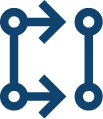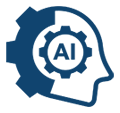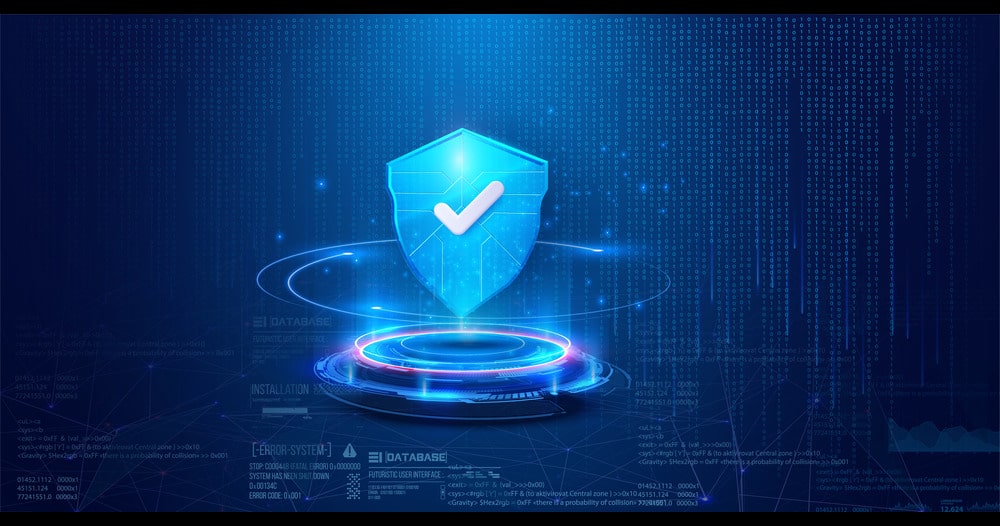According to the reports published by LinkedIn in 2023, the required skill set for new positions has changed by 25% since 2015, and in the coming years, this number is expected to double by the end of 2027.
In addition to this, it is reported that 77% of organizations are unable to find a perfect candidate for the new roles that they open for IT recruitment. As a result, candidates must be on their toes when it comes to learning and reskilling themselves.
Right now, global technology is under a massive revolution, which is led by Artificial Intelligence (AI) and Machine Learning (ML) along with the Internet of Things (IoT). With new trends emerging out of the blue every month, it is becoming a major concern in the minds of both employers and employees as to what is going to happen in the future of the workplace.
Today, with this blog, we are aiming to decipher and try to predict the future of the workplace by closely understanding the modern trends and innovations that are bringing change to various industries across the globe.
1 Use of Generative AI in every industry
In 2023, ChatGPT’s new update came like a storm, and people started fearing it as it might take away the jobs which they are currently hired for. According to the report published by Boston Consulting, “Generative AI is going to be the industry leader in the next 5 years. As a result, each business needs to have a compelling and concise generative AI strategy in place to win over the market.”
AI and ML have been making big names for more than a decade now, and in some industries, these two technologies are now fully integrated into the system. Some of the major products and services that we buy today are now coming with these two technologies as a built-in feature.
With generative AI, businesses can create and even automate the whole customer experience, providing each user with a customized experience based on their preferences and search history.
On the other hand, if we look at the programming and software development side of business. We find that with the implementation of AI, developers are able to improve code efficiency by 55%. These are just a few examples where generative AI is working side-by-side with humans to provide better outputs to the work.
Prompt Engineering (PE), a completely new field of AI, is now under development. This technology aims to optimize the interactions with the AI systems and help developers maximize its impact in various programs.
2 Soft skills and human touch is going to rise
With most of the development work being taken care of by AI and ML. The focus on developers, data analytics, and researchers will shift from human resources, sales, and other departments where soft skills are more in demand.
Tasks that can only be successful after having a human touch will be more mission critical. As a result, in 2024, we are going to see companies putting larger investments in soft-skill training and developing emotional intelligence, communication, interpersonal problem-solving, and thought leadership.
In the coming years, employers are going to lean heavily on providing a better human-centric culture in their offices and workspace. This approach is going to prioritize well-being, growth, and a certain sense of belonging.
Businesses and companies will be more purpose-driven, and they will be aiming not just for profit but also to focus on creating a positive societal impact. This will be done by aligning the business strategies with a higher purpose, which is beneficial for the people who are working in it.
3 Smart Machines are going to be our friends at workplace
With each day, machines and computers are getting smarter. They are now able to complete tasks on their own, which used to be done by a human manually. In addition to this, some tasks are completely automated that we couldn’t even think of that can be done by machine.
One of the major examples of this change can be seen in how TV broadcasters, concerts, F1, Moto GP, and other programs now take aerial shots using drones. Back when drones were not invented, it was a helicopter that was hired to take aerial shots of the scene. Now, we don’t require a pilot, a camera person, and a support staff to shoot a scene from the aerial point of view.
Apart from this, companies are going to start increasing their workload on smart machines, apps, programs, and others. Likewise, in 2024, we expect employees will be creating a personal toolkit for their virtual doppelgangers to make them handle repeated tasks while the real person is going to take care of much more crucial tasks.
These virtual counterparts will be developed using AI and ML software. They will be accessible to both the person who created it and to the team members based on the requirement.
All of this is going to lead employees to have a higher digital dexterity that is needed for the increase in demand for a more automated workspace where people and technology will work together for the betterment of the company.
4 Personalization will be delivered at a larger scale
There is no doubt that customers prefer to be contacted by the same person every time they are facing some problem with your product or service. This way, your team members will be able to build a good relationship with the customer that eventually brings more business over time. This is one scenario in which companies are making sure they provide a personal touch to customers.
Not only products in 2024, but we are also expecting to see even services being personalized and have add-ons to better accommodate the requirements of the customers. According to the research done by Deloitte, 1 in 5 customers are out there looking for a way to personalize their purchase to make it more appealing and one-of-a-kind.
5 New methods of employee training
The value of employee training depends on the type of content that is delivered in it. Learning & development staff will have to spend considerable amounts of time researching, planning, and producing the training material for a company. On the other hand, they can also think of outsourcing the training program.
We believe in 2024, companies will have new options readily available to them for outsourcing high-quality training content. In addition to this, the length of the videos that are already present in the existing training can be cut short to increase the engagement and completion rates.
Apart from this, even in training programs, companies can provide user-generated content that shows the current requirements of the customers and clients. This will help the L&D team to curate a much more realistic training program that shows a clear picture of what employees need to do after the completion of the training.
6 Wellbeing programs & presence of mental health support in workspace
Many employees struggle to have a work-life balance. As a result, they are in constant fatigue and feel burnout. To counteract these problems, businesses have to start working on well-being programs along with training programs to lower the number of absenteeism and resignations.
These programs are going to help employees deal with the stress they feel in the modern workspace and the pressure they feel outside the office. In addition to this, companies must set up opportunities for employees beyond technical skills to support them and their mental well-being. These programs can include stress management, meditation classes in the office, positive thinking, mindfulness, and time management skills.
An employee armed with these skills will be able to handle stress, development deadlines, and other problems in an effective manner without feeling overwhelmed when things get busy at work.
Besides this, in 2024, organizations must take a step further to invest in creating a well-being office that allows employees to switch off, recharge, or even take meditation breaks in the office. These little additions might not seem functioning at the start, but over time, the results in terms of happy employees are going to be staggering. Likewise, it will also lead to higher staff retention, better company reputation, and even higher job satisfaction.
7 Data will play a vital role in the economy
With remote and hybrid working becoming a common norm, it has become more important to monitor the productivity of the employees. According to the reports published by Gartner, 16% of organizations are trying their hands on new technologies to monitor their employees. These technologies are virtual clocking in and out, tracking work system usage, and monitoring employee emails or internal chat systems.
Moreover, some organizations are using employee engagement and well-being to have a better understanding of the employee experience. In the coming years, we are going to see technology assessing employees who are working too much and providing them prompts to take a break, exercise, or take some nutrition to boost their energy.
Team leaders are going to use this technology to foster a hybrid workplace, which will help them embrace the working styles of all employees and find a better way to increase their efficiency at work.
8 Purpose is going to take the centre stage
In 2024 and in years to come, we are expecting to see a change in employees’ nature. What this means is employees are more inclined towards making a meaningful social impact rather than just finding a job to make ends meet.
People are going to look for a purpose in their lives, find their passion, and find work in that specific field. They will not wait to follow their passion after having enough balance in their bank accounts.
Companies have to show employees how their work is going to impact society and add value to the lives of people. In all of this, social media platforms are going to play a vital role in motivating employees to contribute more to the innovation and equitability factors of society.
Organizations that want to stay ahead of the competition will have to place themselves as a place where people can bring change in society and leave a positive impact on the world. Brand values will be changing to add personal stories, experiences, and success stories of employees in the field of various social causes.
9 With remote & hybrid work cultures in place, organizations will face new challenges
Employees who are working remotely or on contract basics will be facing a dilemma, which is whether they need to work on upskilling or find better projects to get paid.
They are going to take more assignments, potentially from the industry they like to work in. Also, they will be looking for a project that allows them to work according to their time, meaning they can work on the project independently around the clock if they want to.
This shows employees will be looking for jobs that allow them to have a healthy lifestyle and give them enough freedom to have a good work-life balance. With technology bringing people from all around the globe together, it will also reveal cracks in corporate relationships due to differences in cultures.
With more and more people preferring to work remotely, organizations will be having a hard time building the same social relationships that they used to work with when all the team members came to the office.
Leaders of companies and businesses have to work closely with HR to ensure that the work-life balance keeps swinging back and forth for each employee according to different factors such as work distribution, time, life stages, and more.
10 Resilience
Last is the resilience against all the different types of threats that are lurking around and could potentially damage the organization’s work. These threats include cyber-attacks, economic downtimes, environmental disasters, global pandemics, and other events of emergency.
Companies have to find a way to be triumphant in difficult times and keep on evolving to provide the service to their customers. The future isn’t certain. Thus, companies have to build resilience to any form of threat in upcoming years.
Conclusion
So there we have it, these were the 10 modern trends and innovations that are going to shape the workspace in 2024. To summarize this in short, organizations have to become more agile and need to focus on providing continuous learning, upskilling, and reskilling their employees for upcoming technologies.
Companies need to proactively embrace these trends to create a culture of continuous improvement and empower their workforce while making sure that employee satisfaction rates stay high.

















































